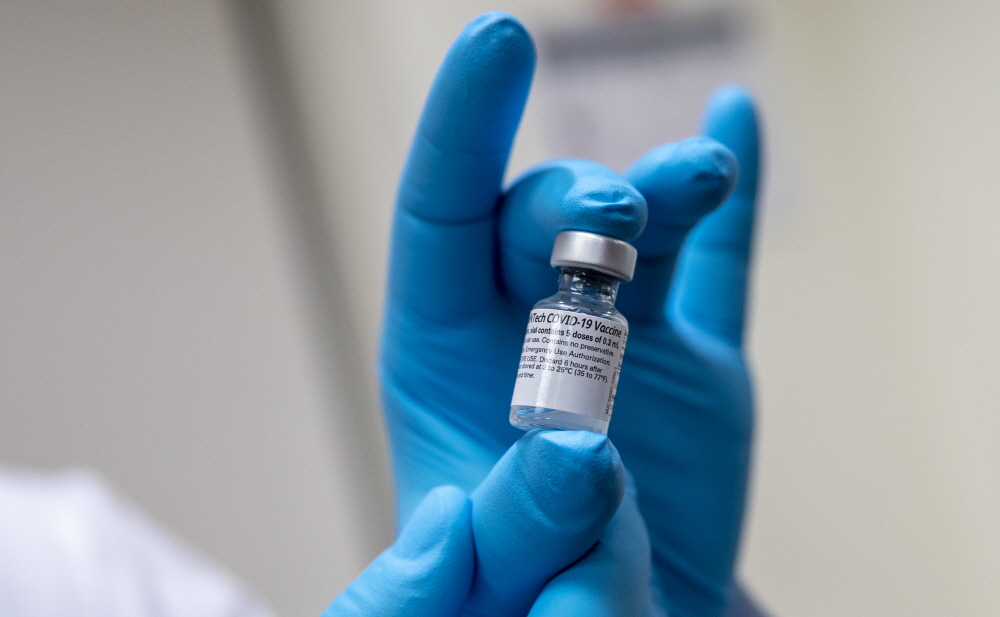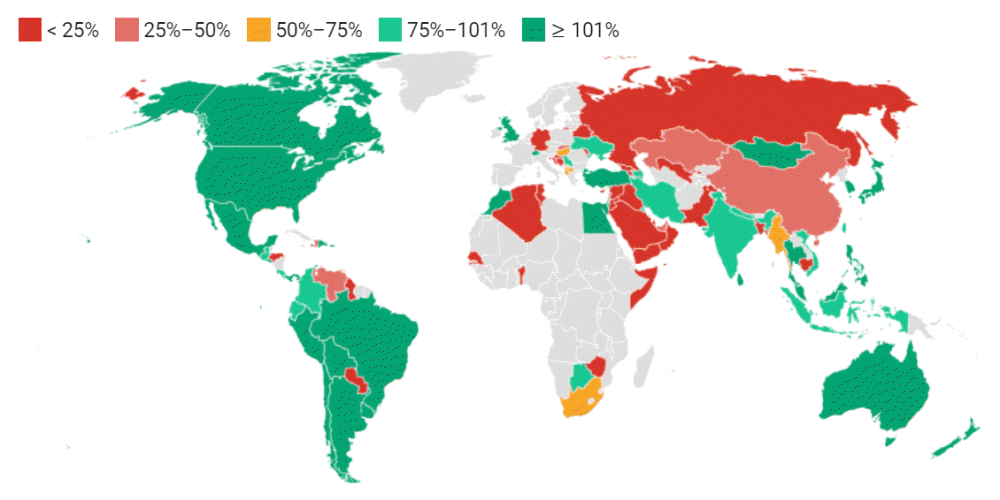
There are still many countries around the world where even medical personnel are not vaccinated. As of June 21st, 10.04% of the world’s population had been vaccinated, but 10.04% of the world’s population was mostly focused on developed countries. According to Our World in Data, which specializes in global issues such as poverty and disease, only 0.9% of low-income countries have completed the first dose.
According to Maria De Jesus, a professor who studies medical inequality at American University, the problem behind this vaccine gap is that developed countries are hoarding vaccines in advance. For example, the U.S. has 1.2 billion doses of the COVID-19 vaccine, which is enough for the entire population to be vaccinated and 80% of the population to complete another dose of the vaccine. In Canada, 381 million doses are sufficient to complete five vaccinations for the entire population.
Therefore, if the world is divided in terms of vaccine procurement, most countries in the Americas and Australia have more than the amount needed for the entire nation. For reference, countries such as Russia and China use their own vaccines and do not disclose the vaccination rate.
If the vaccine gap is left uncorrected, the death toll from COVID-19 is expected to rise further. According to a paper published by a research team at Northeastern University in 2020, a simulation result that the death rate would decrease by 61% if countries cooperate and implement a fair vaccine distribution plan worldwide, whereas if developed countries prioritize their own vaccination, the death rate will decrease by only 33%. could get

A good example of this situation is AIDS. AIDS was saved by millions of people in developed countries when effective antiretroviral drugs appeared in the 1990s. However, these antiretroviral drugs are expensive, and the first anti-HIV drug cost $8,000 for a year at that time. At today’s exchange rate, that’s about $19,000. In addition, due to concerns about a price drop, pharmaceutical companies have harmonized the prices of anti-HIV drugs internationally, making it difficult for poor countries to obtain them. In sub-Saharan Africa, where AIDS was rampant, 22 million people were infected as of 2000, and in two-thirds of the regions, the adult HIV-positive rate was 7.5-10%.
In addition, there is a possibility that a mutant strain may occur if there are countries that do not reach the vaccine. In areas where the COVID-19 virus infection has been prolonged, the virus is more likely to mutate, so there is a risk that a more aggressive or lethal or highly aggressive Corona 19 virus mutant will be created.
In this regard, wealthy and highly vaccinated countries need to be held accountable for increasing global vaccination rates. It is necessary to establish a vaccine production infrastructure in the world and expand production globally. Related information can be found here.


















Add comment